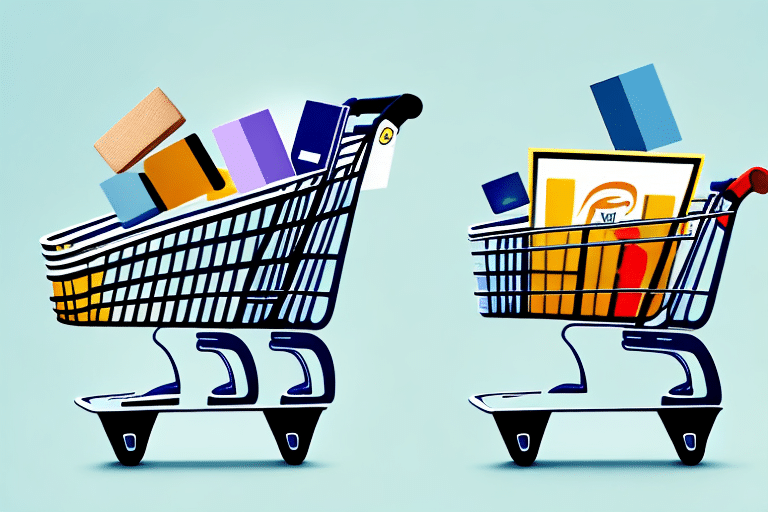Evolution of Amazon: From Online Bookstore to Retail Powerhouse
Amazon.com was founded in 1994 by Jeff Bezos as an online bookstore. Rapidly expanding beyond books, Amazon introduced a vast array of product categories and launched the Amazon Marketplace, allowing third-party sellers to offer their products on the platform. Today, Amazon dominates multiple industries, including electronics, fashion, grocery, and cloud computing, solidifying its position as the world's largest online retailer.
The company's success is driven by several key factors: an extensive product selection, competitive pricing, and rapid shipping options. Amazon Prime, the company's flagship membership program, offers benefits such as free two-day shipping, access to streaming services, and exclusive deals, fostering strong customer loyalty and repeat business.
Additionally, Amazon's strategic use of data and analytics plays a pivotal role in its growth. By analyzing customer behavior and preferences, Amazon personalizes the shopping experience, enhancing customer satisfaction and driving sales. This data-driven approach allows Amazon to anticipate market trends and maintain a competitive edge.
Impact on Brick-and-Mortar Retailers
Statistics on Store Closures
The rise of Amazon has significantly impacted brick-and-mortar retailers. According to a Credit Suisse report, physical stores have been closing at an accelerated rate, with over 6,700 store closures in 2017 alone. This trend surpasses the retail closures experienced during the Great Recession of 2008-2009.
Responses from Major Retailers
Major retailers like Walmart and Target have responded to Amazon's dominance by heavily investing in their e-commerce platforms. Walmart, for instance, has expanded its online grocery delivery services and acquired e-commerce companies to bolster its digital presence. Target has enhanced its same-day delivery options and integrated its online and in-store experiences to compete more effectively.
Strategies for Brick-and-Mortar Success
Despite the challenges, some brick-and-mortar retailers are finding ways to thrive by offering unique in-store experiences. Bookstores hosting author events and book clubs, as well as clothing stores providing personalized styling services, create a community atmosphere that online platforms like Amazon cannot replicate.
Amazon's Supply Chain and Logistics Innovations
Automation and Technology
Amazon has revolutionized supply chain management through significant investments in automation and technology. The use of robotics in warehouses has increased efficiency, enabling faster and more accurate order fulfillment. Automated systems reduce human error and lower operational costs, allowing Amazon to offer competitive pricing and swift delivery.
Data-Driven Supply Chain Optimization
Leveraging extensive data analytics, Amazon optimizes its supply chain by predicting product demand and managing inventory levels across its distribution centers. This predictive modeling ensures that products are available where and when they are needed, minimizing delays and enhancing customer satisfaction.
Innovative Delivery Methods
Amazon continuously explores innovative delivery methods to streamline operations. Initiatives like Amazon Locker provide secure package pick-up locations, reducing failed delivery attempts and offering customers flexible retrieval options. Additionally, Amazon is pioneering drone deliveries and expanding its fleet of delivery vehicles to further enhance the speed and reliability of its logistics network.
Private Label Brands and Market Competition
Growth of Amazon's Private Labels
Amazon has developed a range of private label brands, such as AmazonBasics and Solimo, which offer products across various categories at competitive prices. These brands allow Amazon to control the supply chain and improve profit margins, while providing customers with reliable alternatives to established brands.
Impact on Traditional Brands
The success of Amazon's private labels has led to increased competition for traditional brands. Some critics argue that Amazon's ability to leverage its vast resources and data gives it an unfair advantage, potentially stifling competition and limiting consumer choice.
However, the popularity of private labels has also incentivized other retailers to develop their own brands, fostering a more competitive market landscape.
Future Trends: Expansion into New Markets and Technologies
New Market Ventures
Amazon continues to expand into diverse markets, including healthcare, fashion, and beauty. The acquisition of Whole Foods Market marked a significant entry into the grocery sector, blending online and offline retail experiences. Additionally, Amazon's ventures into healthcare aim to streamline medical services and make healthcare more accessible.
Data and Privacy Concerns
As Amazon collects vast amounts of customer data, concerns about privacy and data security have intensified. While data-driven personalization enhances the shopping experience, it also raises questions about the handling and protection of personal information.
Voice Technology in Shopping
Amazon's investment in voice technology through devices like Alexa is transforming the shopping experience. Voice-activated shopping allows customers to place orders hands-free, offering unprecedented convenience. However, this technology also necessitates robust security measures to prevent unauthorized access and ensure transaction safety.
Customer Loyalty through Amazon Prime
Benefits of Prime Membership
Amazon Prime is a cornerstone of Amazon's customer loyalty strategy. Prime members enjoy benefits such as free two-day shipping, access to Prime Video and Prime Music, exclusive discounts, and early access to deals. These perks encourage users to remain subscribed and make Amazon their primary shopping destination.
Prime Day and Sales Impact
Prime Day, Amazon's annual shopping event, offers significant discounts exclusively to Prime members. In 2023, Prime Day generated over $12 billion in sales, surpassing traditional events like Black Friday and Cyber Monday. This event not only boosts Amazon's revenue but also drives increased traffic to the platform, benefiting third-party sellers as well.
Personalized Recommendations
Amazon utilizes customer data to provide personalized product recommendations, enhancing the shopping experience and increasing the likelihood of repeat purchases. By understanding individual preferences and behaviors, Amazon builds trust and fosters long-term customer relationships.
Criticisms, Controversies, and Competition Strategies for Small Businesses
Treatment of Workers
Amazon has faced criticism regarding its treatment of warehouse workers, including concerns about working conditions, job stress, and labor practices. Reports of high injury rates and demanding productivity targets have sparked debates about the company's labor policies.
Anticompetitive Practices
Amazon has been accused of engaging in anticompetitive practices, such as using data from third-party sellers to inform its private label development. Regulatory bodies in various countries are scrutinizing Amazon's market practices to address potential monopolistic behaviors.
Environmental Concerns
The environmental impact of Amazon's extensive logistics network, including packaging waste and carbon emissions from delivery vehicles, has drawn environmentalists' attention. In response, Amazon has pledged to achieve net-zero carbon emissions by 2040 and is investing in sustainable practices.
Strategies for Small Businesses to Compete
Small businesses can employ several strategies to compete with Amazon:
- Build a Strong Brand: Developing a unique brand identity helps differentiate a business from larger competitors.
- Focus on Customer Service: Providing exceptional customer service can create loyal customers who value personalized experiences.
- Offer Niche Products: Specializing in niche markets or unique products can attract specific customer segments that are underserved by larger retailers.
- Leverage Digital Marketing: Utilizing social media, SEO, and targeted advertising can increase visibility and attract a broader audience.
- Engage with the Community: Building a community through events, partnerships, and local engagements fosters a loyal customer base.
Conclusion
The Amazon Effect has reshaped the retail landscape, influencing consumer behavior, traditional retailers, and the overall market dynamics. While Amazon's innovative approaches and customer-centric strategies have driven its success, they have also sparked significant challenges and debates regarding competition, labor practices, and environmental impact. Understanding the multifaceted impact of Amazon is crucial for businesses and consumers alike as the retail industry continues to evolve.








